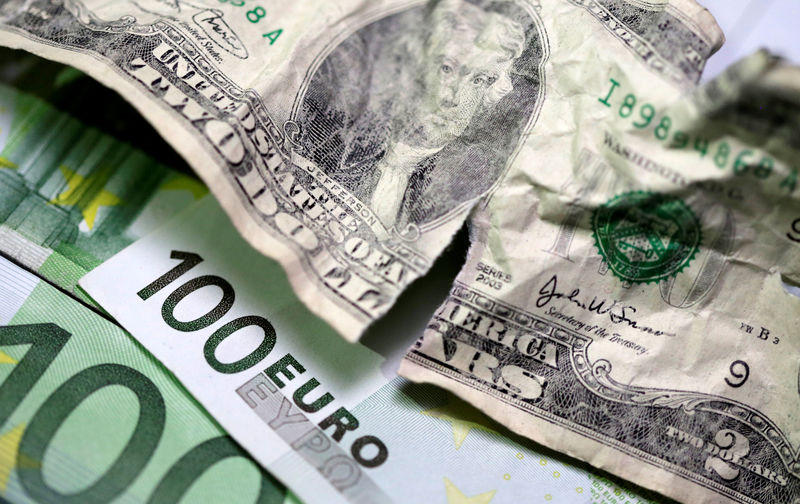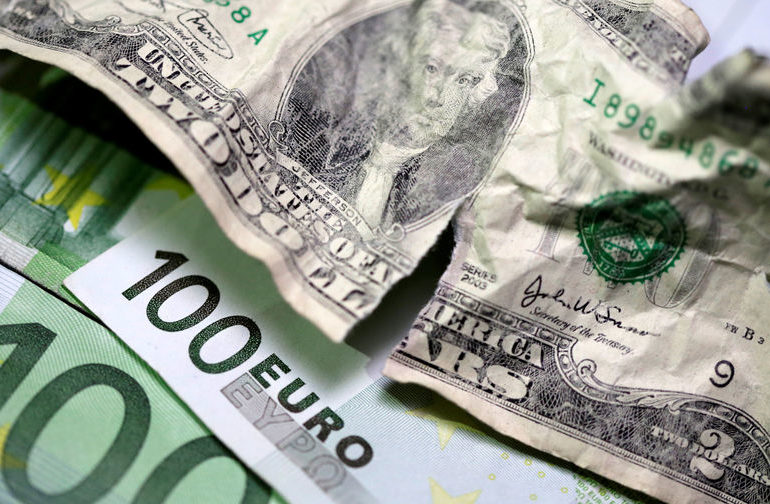
© Reuters.
By Geoffrey Smith
Investing.com — The dollar pushed higher in early dealings on Tuesday, as the violent snap back in U.S. stocks in the second half of Monday’s trading failed to convince global markets that the recent volatility has run its course.
Risk aversion was in evidence across equity and commodity markets in Asia and Europe, nudging the back toward a two-week high. The index, which tracks the greenback against a basket of developed market currencies, was up 0.1% at 95.995 by 3 AM ET (0800 GMT).
The was the weakest of the major currencies, falling 0.2% to $1.1305, while the was also extending its losses, albeit in narrow ranges, down less than 0.1% at $1.3470, after disclosures of yet another unauthorized party in 10 Downing Street put further pressure on beleaguered Prime Minister Boris Johnson. Also hurting sterling were figures showing another bigger-than-expected government borrowing requirement in December.
Ranges are likely to stay narrow as the U.S. Federal Reserve begins its two-day policy meeting, where the focus will be on the guidance given by Chairman Jerome Powell at his press conference on Wednesday. The Fed isn’t widely expected to change its policy settings, but its ‘dot plot’ and Powell’s comments will indicate whether the central bank feels it needs to speed up the process of withdrawing stimulus.
Before that, the focus in Europe will be on the German business confidence index published by at 4 AM ET (0900 GMT). The for January had risen surprisingly strongly last week, while IHS Markit’s also pointed to a bright start to the year for Europe’s biggest economy. However, the Ifo survey is usually the most granular and reliable guide to economic trends there.
On Monday, the Deutsche Bundesbank had warned that the economy had in the fourth quarter, as industry struggled with sustained chip shortages and, from December, a fresh wave of Covid-19.
Also of interest later will be the Hungarian central bank’s regular meeting. The NBH is expected to keep its key rate unchanged at 2.40%, after raising it in each of its last six monthly meetings from a base of 0.9%. That had appeared to stop the steady decline through the second half of 2021. However, it has come under fresh pressure from the volatility coming out of the U.S., losing 2.5% against the euro in the last two weeks.
Central European currencies continue to struggle by regional association with Ukraine, where there has been no meaningful change in the situation overnight. The Polish fell 0.4% against the euro to test a new low for the year, while the recovered a little from its sharp selloff on Monday to trade at 78.83 to the dollar.
Fusion Media or anyone involved with Fusion Media will not accept any liability for loss or damage as a result of reliance on the information including data, quotes, charts and buy/sell signals contained within this website. Please be fully informed regarding the risks and costs associated with trading the financial markets, it is one of the riskiest investment forms possible.

